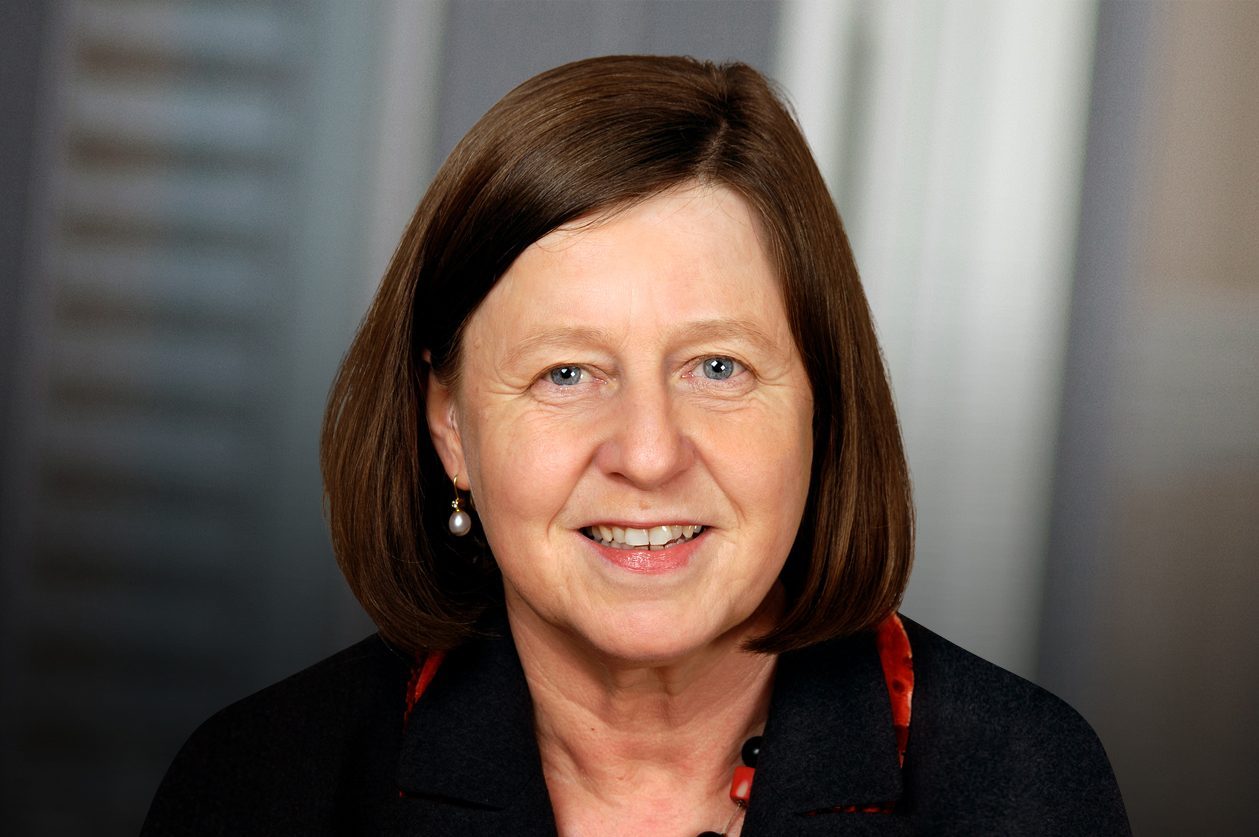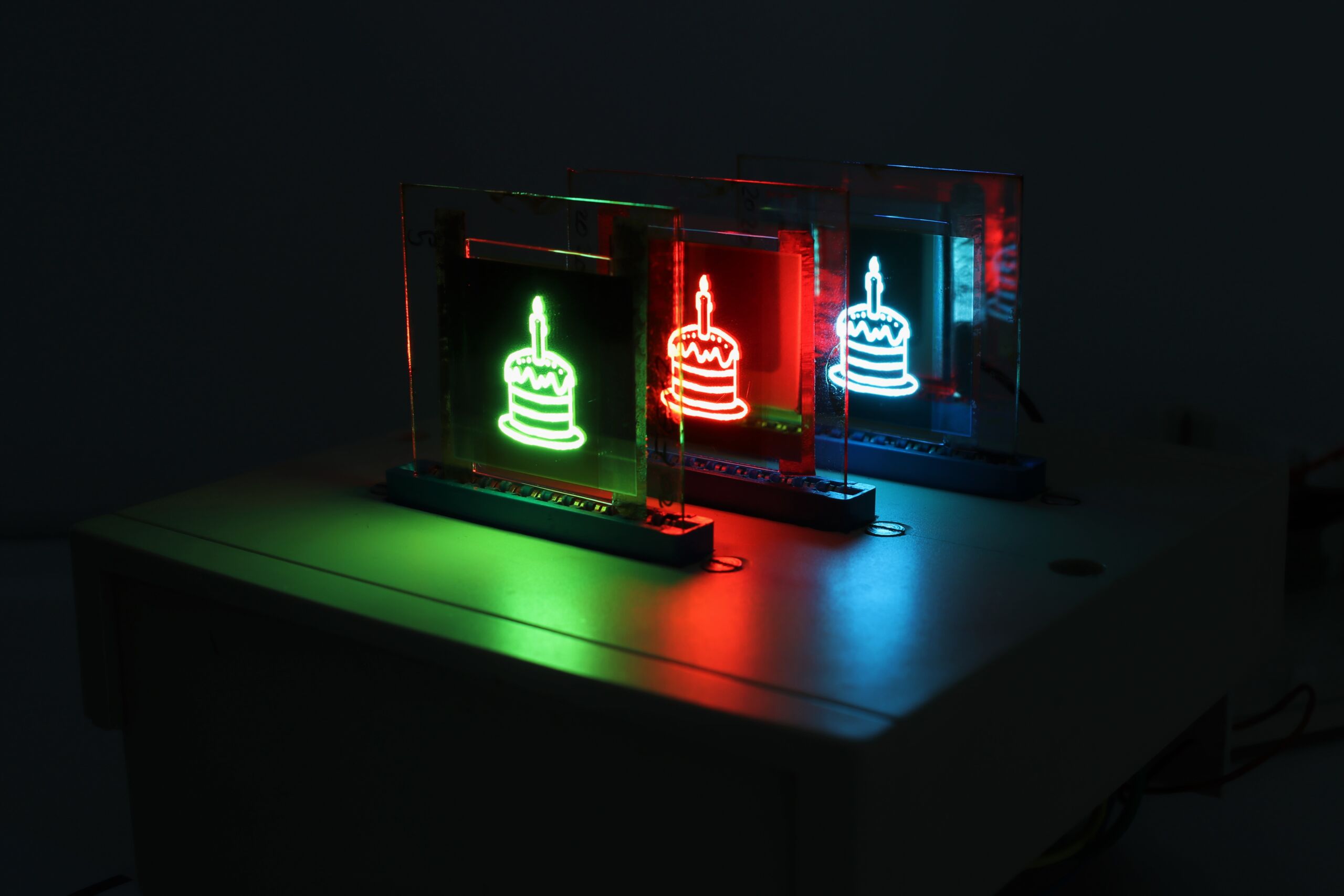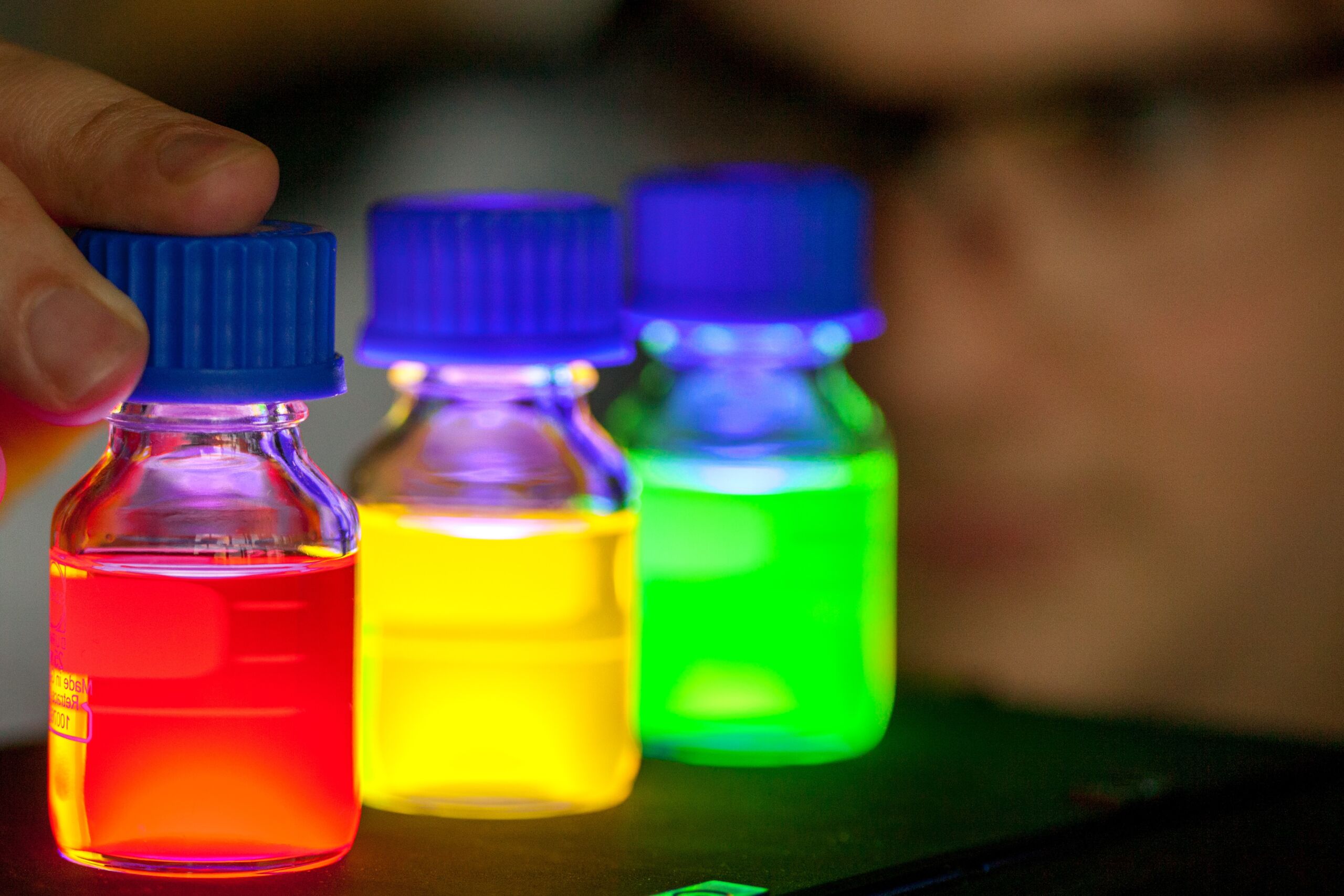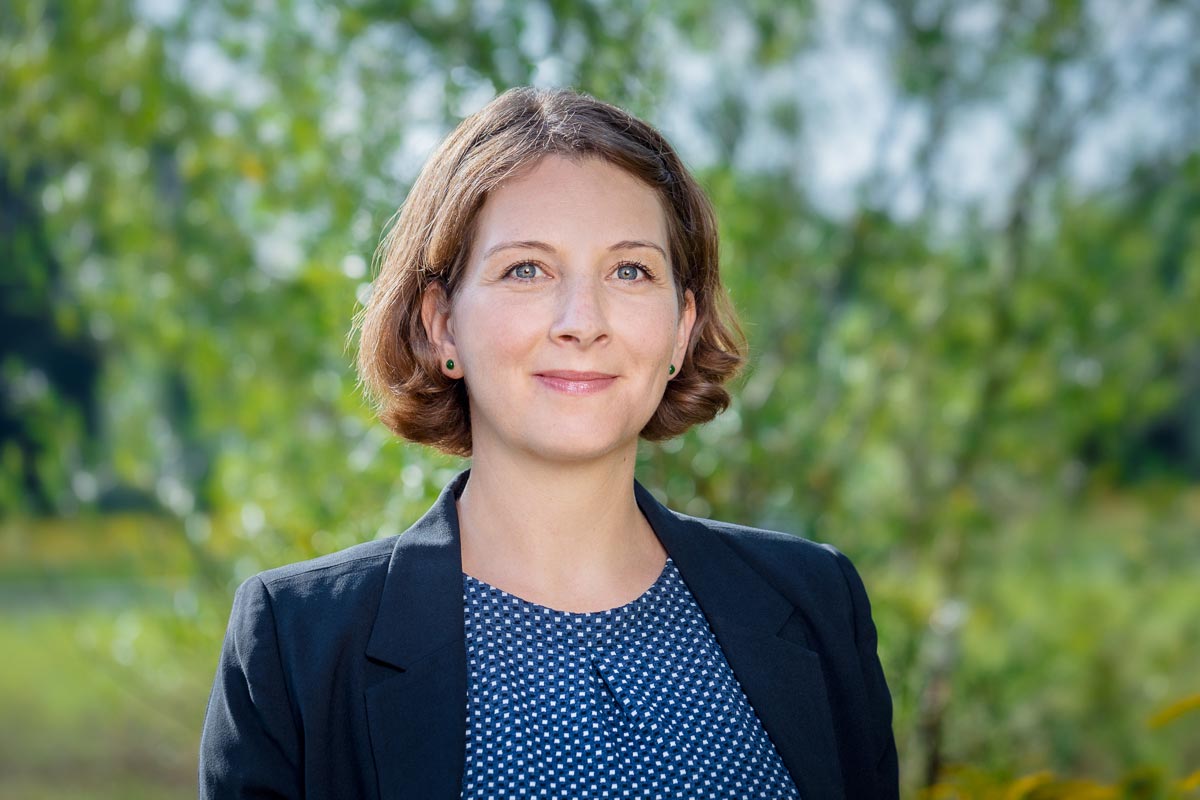
Displays from the printer
About half of the displays used in smartphones today use OLEDs. In Potsdam Science Park, Dr. Christine Boeffel is working on further improving the printing processes for these fascinating light-emitting diodes. She is dedicating her research to improving precisely this printing process for the production of OLEDs.
OLEDs from the printer
Not every scientist is lucky enough to encounter the fruits of his or her work at every turn in everyday life. Dr. Christine Boeffel from the Fraunhofer Institute for Applied Polymer Research IAP in the Potsdam Science Park has exactly that. It is very likely that she sees them every day in public when she looks at the many unfamiliar faces through the light of their smartphones. “About half of today’s smartphone displays contain OLEDs,” she explains.
OLEDs, short for Organic Light Emitting Diode, are organic light emitting diodes. As a result, we use them just like their similar-sounding relatives, the LEDs: OLEDs are primarily used in displays, such as those of smartphones – but their design and manufacture differ significantly from “conventional” LEDs. OLEDs are made of organic (i.e. carbon-based) semiconducting materials. This special feature is associated with a number of advantages. For one, the contrast of OLED displays is significantly higher than that of liquid crystal displays (LCDs). On the other hand, OLEDs have a significantly lower energy consumption. While commercially available OLEDs are manufactured using a vacuum process, Ms. Boeffel and her team are pursuing the approach of printing OLEDs. This offers a number of benefits over production in a vacuum process: better material utilization saves resources, the design is flexible and the components can be scaled to any size.

Fig. 1: Lighting technology from a 3D printer: O LEDs for ambient lighting and for use as lettering © Fraunhofer IAP
Display industry under pricing pressure
This is exactly where Christine Boeffel’s research comes in. “The prices in the display industry are under high pressure,” explains Boeffel. Therefore, there is an immense need to reduce the costs for the mass production of OLED displays using optimized printing processes. In addition, displays with organic light-emitting diodes open up some other exciting possibilities, says the researcher: “Unlike with most other technologies, OLEDs also make foldable screens feasible.“ So if smartphones with such foldable displays become generally accepted in the future – the first models have already been presented by some manufacturers – OLEDs are very promising candidates for implementation.
It’s no wonder, then, that research results from the work of Dr. Boeffel and her team are highly sought-after. The European Union recently supported her work as part of its Horizon 2020 research and innovation program, for example, and industry is also expressing interest. Although Boeffel says that she is unable to talk about specific inquiries and projects, she does provide a brief insight: “The automotive industry is also working on the OLED topic.”

Photo: Dr. Christine Boeffel © Fraunhofer IAP
This blog is funded by the European Regional Development Fund (ERDF) and the State of Brandenburg.
Ecosystem Potsdam Science Park
The positioning of her institute in the Potsdam Science Park also contributes to the success of her work, Boeffel emphasizes. Although she is primarily independent in her work, she still benefits from the opportunities that the Science Park offers. “In various formats, we also present our work to practitioners and researchers from other institutions and disciplines. In the same way we inform ourselves about other areas. This occasional look beyond the horizon is enormously important and inspiring.”
And of course, the location also has its advantages beyond work: “Being able to look out the window on a sunny day in summer and see a green meadow instead of perhaps another building wall – that too creates a clear head.“ She also appreciates driving from Berlin to Potsdam-Golm in the morning for her work – and thus “against the flow,” as she says. Whether with or against the current – OLED displays will certainly meet Christine Boeffel in any case.
Photo: Dr. Christine Boeffel © Fraunhofer IAP
This blog is funded by the European Regional Development Fund (ERDF) and the State of Brandenburg.
Contact

Julia Hinz
Site marketing
julia.hinz@potsdam-sciencepark.de + 49 331 237 351 109